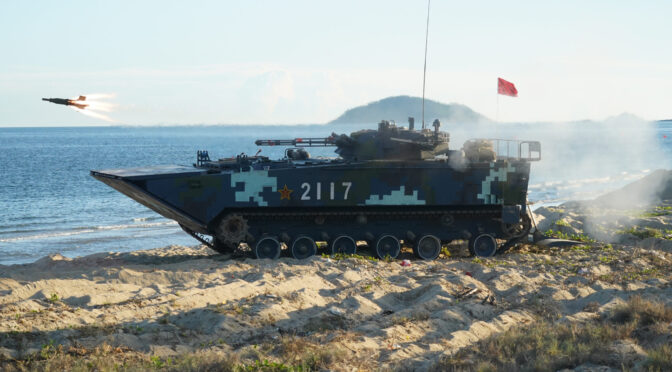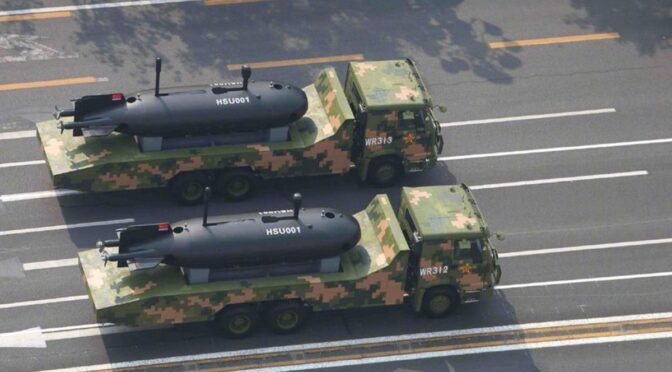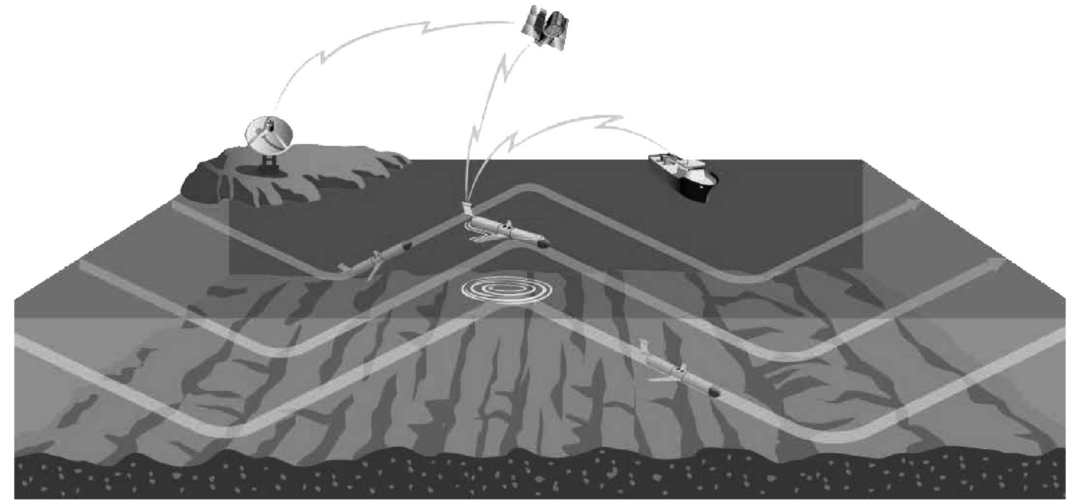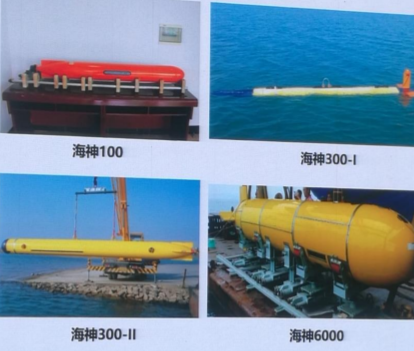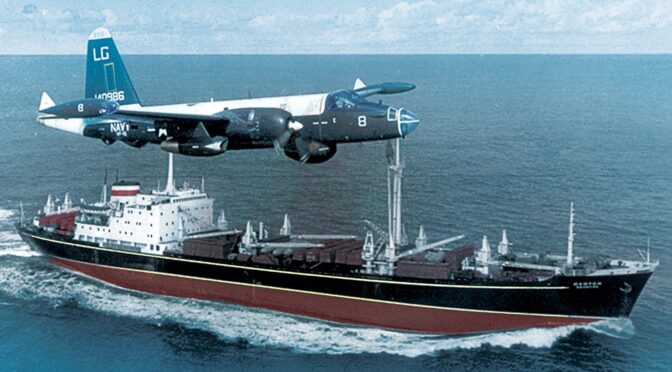By Michael Dahm and Conor M. Kennedy
The Peoples Liberation Army (PLA) has been increasing its ability to use civilian roll-on/roll-off (RO-RO) ferries to move troops and equipment ashore in amphibious landing operations. In August 2020, the PLA conducted a cross-sea mobility evolution using RO-RO ferries. Exercise Eastern Transportation-Projection 2020A (东部运投—2020A) was unique in that it discharged military vehicles from RO-RO ferries directly onto a beach using a modular floating pier. Commercial satellite imagery of a PLA amphibious exercise area in late-summer 2021 revealed that the PLA may have developed an improved floating pier system to support amphibious operations. These capabilities, components of what the U.S. Navy calls “joint logistics over-the-shore (JLOTS),” allows the PLA to use civilian vessels to move large amounts of military equipment into unimproved amphibious landing areas without port infrastructure. A Chinese mobile pier system like those observed in these exercises may have particular application for the PLA in an invasion of Taiwan.
The PLA has been using civilian transportation capabilities for military mobility for many years, moving military forces and equipment up and down the Chinese coast. RO-RO ferries provide significant capacity to move armor and other rolling stock. Recent PLA innovations are enabling greater roles for civilian ferries to move forces ashore. For example, some Chinese civilian ferries have been retrofitted with capabilities to deploy amphibious armored vehicles at-sea, essentially making them auxiliary amphibious landing ships. This is likely meant to compensate for the apparent shortage in PLA amphibious lift required to conduct a cross-strait landing. The PLA appear to be learning from their American counterparts with solutions for moving forces and supplies ashore in the absence of port infrastructure. This article explores a novel floating pier system that may provide a solution to some of the PLA’s amphibious lift shortcomings.
What the Chinese call an “offshore mobile debarkation platform” (海上机动卸载平台) was spotted in commercial satellite imagery along the fishing wharves of the Lanshan District in Rizhao City, China in September 2020. A PLA 2007 patent application for a similar system indicates sections include “square” or intermediate pontoon modules (方形模块), bow-stern modules (首尾模块), ramp modules (坡道模块), powered modules (推进模块), cargo ferries (货运渡船) and lighters (驳船) as well as warping tugs (绞滩拖船) to maneuver the different sections. The floating pier system was developed by engineers at the PLA Military Transportation University in Tianjin.
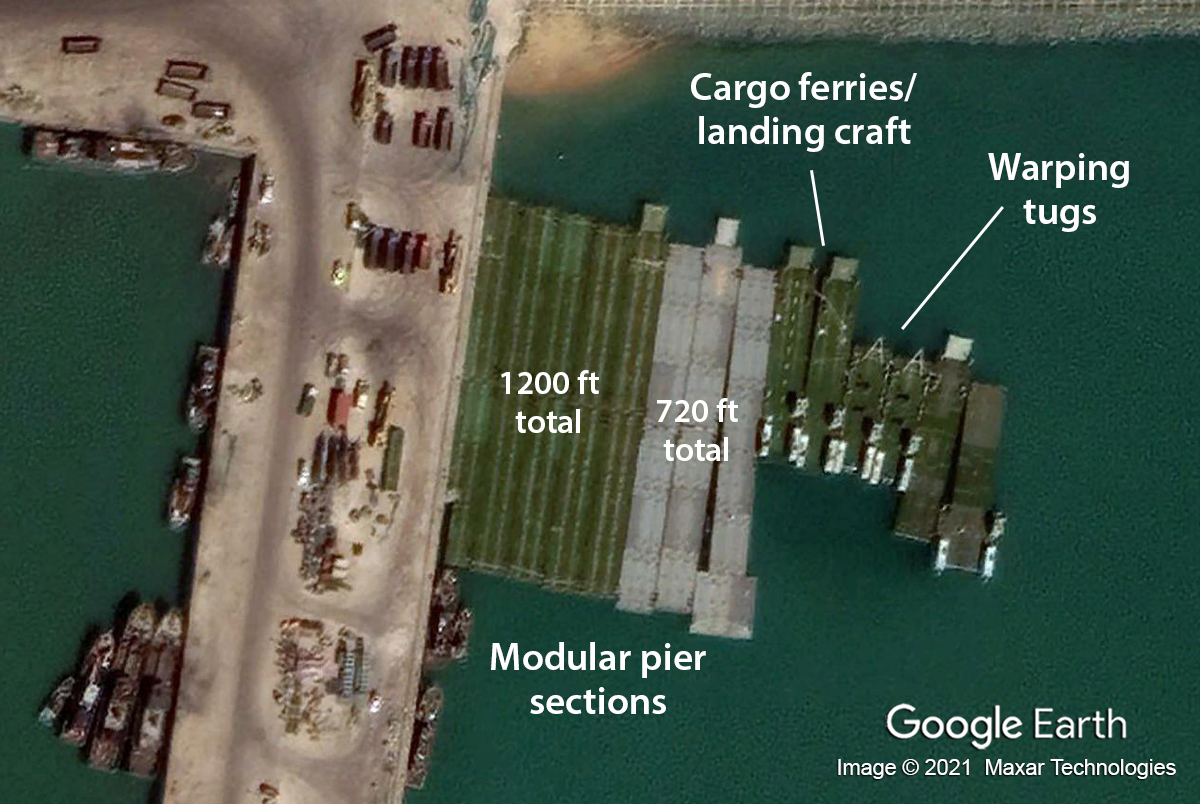
The Chinese system looks very similar to the U.S. Navy’s Improved Navy Lighterage System (INLS), produced by the Fincantieri Marine Group. The INLS is used principally by U.S. Navy Maritime Prepositioning Force (MPF) ships. The system appears to have the same types of interchangeable modules as the U.S. floating causeway system. The U.S. system is used for off-loading MPF ships miles off-shore and then floating equipment and cargo to the beach. Alternatively, the INLS can be employed as a floating pier as shown in the images below from Exercise JLOTS 2008 off Camp Pendleton, California.
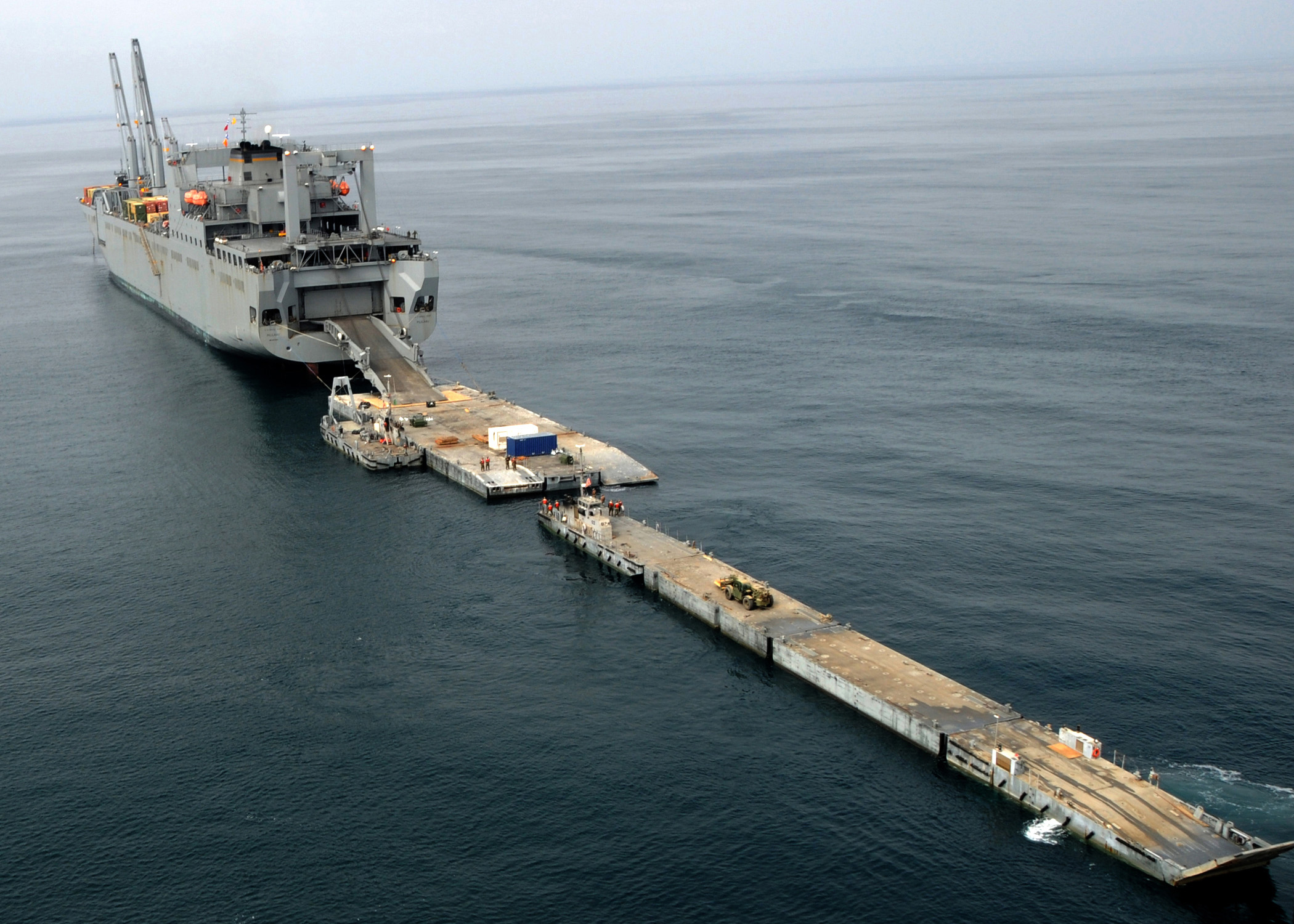
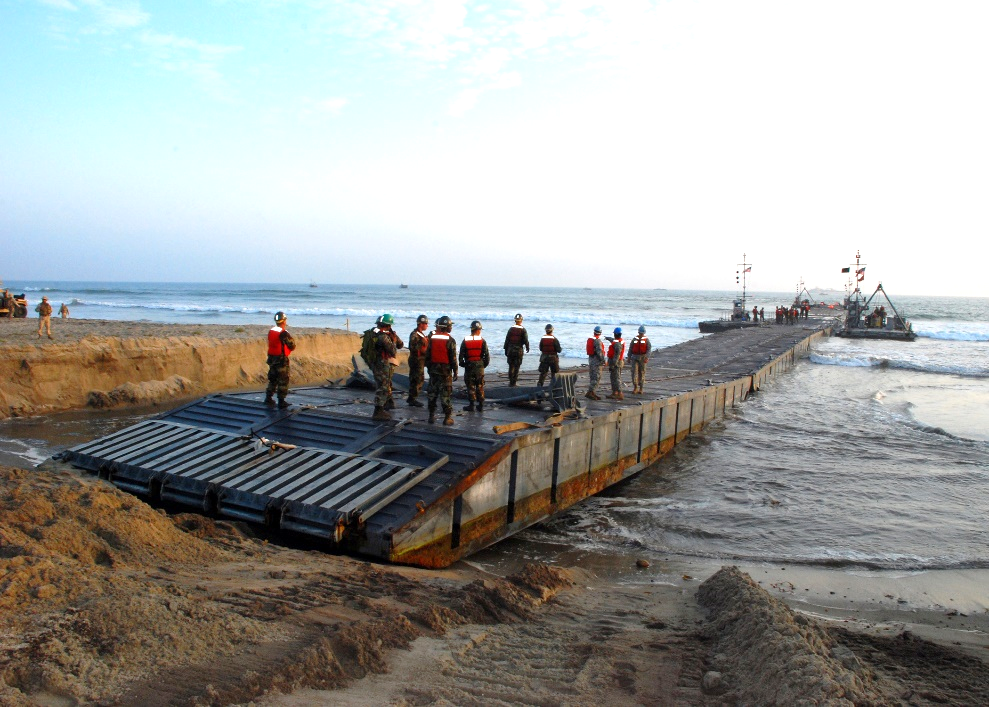
China’s National Defense Mobilization Committee ordered development of an offshore mobile debarkation platform for the PLA in 2001. The system was one of the major focus areas under “Project 019” (019工程), an effort to resolve issues of vehicle and materiel lightering when port infrastructure is unavailable or degraded by “blue forces.” A team of engineers at the PLA’s Military Transportation University worked for over a decade to overcome the engineering challenges associated with the system, especially as they related to connections between the modules and shallow water propulsion. Chinese media reports indicate the system has been used in exercises since 2012, but trials likely began earlier.
The offshore mobile debarkation system was featured in news coverage of a 2014 Guangzhou Military Region (GZMR) exercise. This was reportedly the first time the PLA used a civilian, militia-operated RO-RO ferry to embark and offload a PLA unit using the system. The 2014 exercise took place in the southern port city of Zhanjiang where an unidentified PLA mechanized infantry company (机械化步兵连) was loaded onto the Nan Fang 6, a commercial RO-RO ferry that normally provides service between the mainland and Hainan Island. As part of the exercise scenario, the ferry was told its destination terminal had been damaged and was ordered to offload over the beach. According to the news report, the PLA dispatched and assembled a “sectional causeway” (拼装式栈桥) system to a beach landing area. Warping tugs were shown assembling five pontoon units, extending the floating causeway approximately 600 feet from the shore.
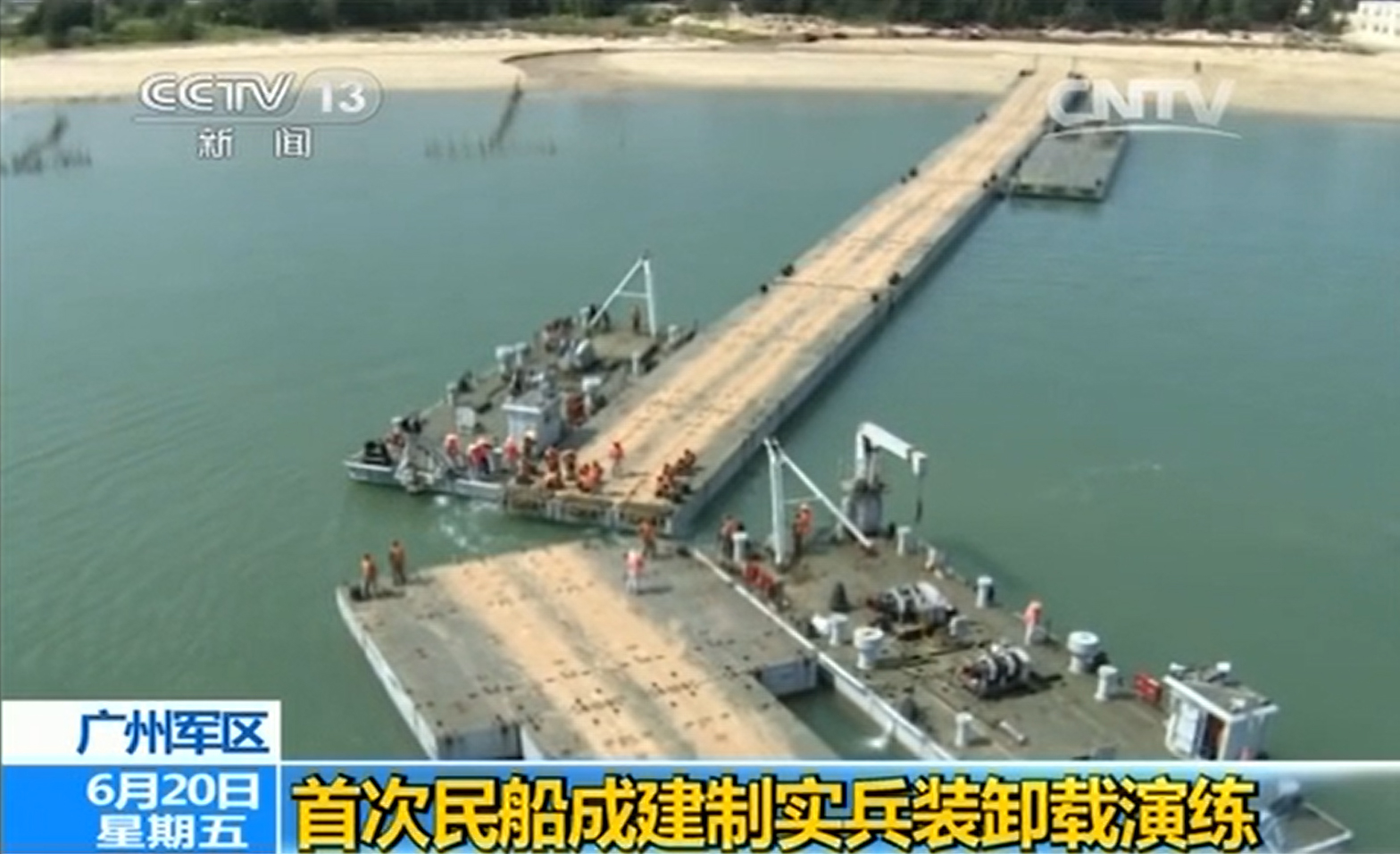
Interestingly, a semi-submersible barge, often used in port construction projects, was placed at the end of the causeway to act as the pier head. With a ramp leading to the causeway, the semi-submersible barge could raise or lower its height above the water to accommodate different size RO-RO vessels.

After the RO-RO ferry docked with the semi-submersible barge, PLA equipment and troops immediately began to stream out of the ship. Reporters stated that the sectional causeway was assembled in just under an hour, a boast that seems somewhat implausible. The GZMR military transportation department director told reporters the floating causeway fixed “a number of bottlenecks in carrying out maritime projection with civilian ships.” There have been few other publicized training events using this system since the 2014 exercise. Prototypes of this system may have seen improvements by PLA engineers over the years, but its basic concept of operation appears to have remained the same.

A Chinese television report on the August 2020 PLA exercise Eastern Transportation-Projection 2020A shows army equipment being loaded onto civilian ships in the port of Lianyungang. Footage showed the port’s container cranes loading trucks and other military cargo into the 322 foot general cargo ship Sheng Tai. At the nearby ferry terminal, PLA armored and wheeled vehicles were loaded aboard the Sheng Sheng 1, a 394 foot, 10,000 ton RO-RO ferry as well as the much larger Bohai Baozhu (Bohai Pearl) a 535 foot, 24,000 ton RO-RO ferry. Like most newer Chinese-flagged ferries, the Bohai Baozhu was built to national defense specifications for carrying military equipment. The Bohai Baozhu is owned by the Bohai Ferry Group (渤海轮渡股份有限公司), which operates eleven RO-RO ferries in the Bohai Gulf. The company’s ships have been organized into the “Eighth Transport Dadui” (海运八大队), part of the PLA’s strategic projection support ship fleet (战略投送支援船队). The Sheng Sheng 1 is seen briefly at the end of the television report offloading tanks onto the semi-submersible barge and onto the offshore mobile debarkation system. The Sheng Sheng 1 was also seen in the July 14, 2020 high-resolution Planet Labs SkySat image, below, preparing to back into the same semi-submersible barge attached to the floating pier.


A soon-to-be published paper presented at a recent conference on PLA amphibious operations hosted by the U.S. Naval War College’s China Maritime Studies Institute provides a comprehensive account of the 2020 exercise. Two dozen commercial ships, tugs, and military landing craft took part in the large-scale operation led by the PLA’s Joint Logistics Support Force. According to ship automatic identification system (AIS) tracks, RO-RO ferries and cargo vessels sailed from the embarkation port of Lianyungang 24 nautical miles north to Lanshan. According to Chinese media reports, just as in the 2014 Zhanjiang exercise, a major component of the exercise involved ferries off-loading using a semi-submersible barge and a floating pier. Civilian ferries like the Bohai Baozhu and the Sheng Sheng 1 made several trips between Lianyungang and Lanshan, apparently transporting military equipment in each run before then returning to civilian ferry service across the Bohai Gulf.
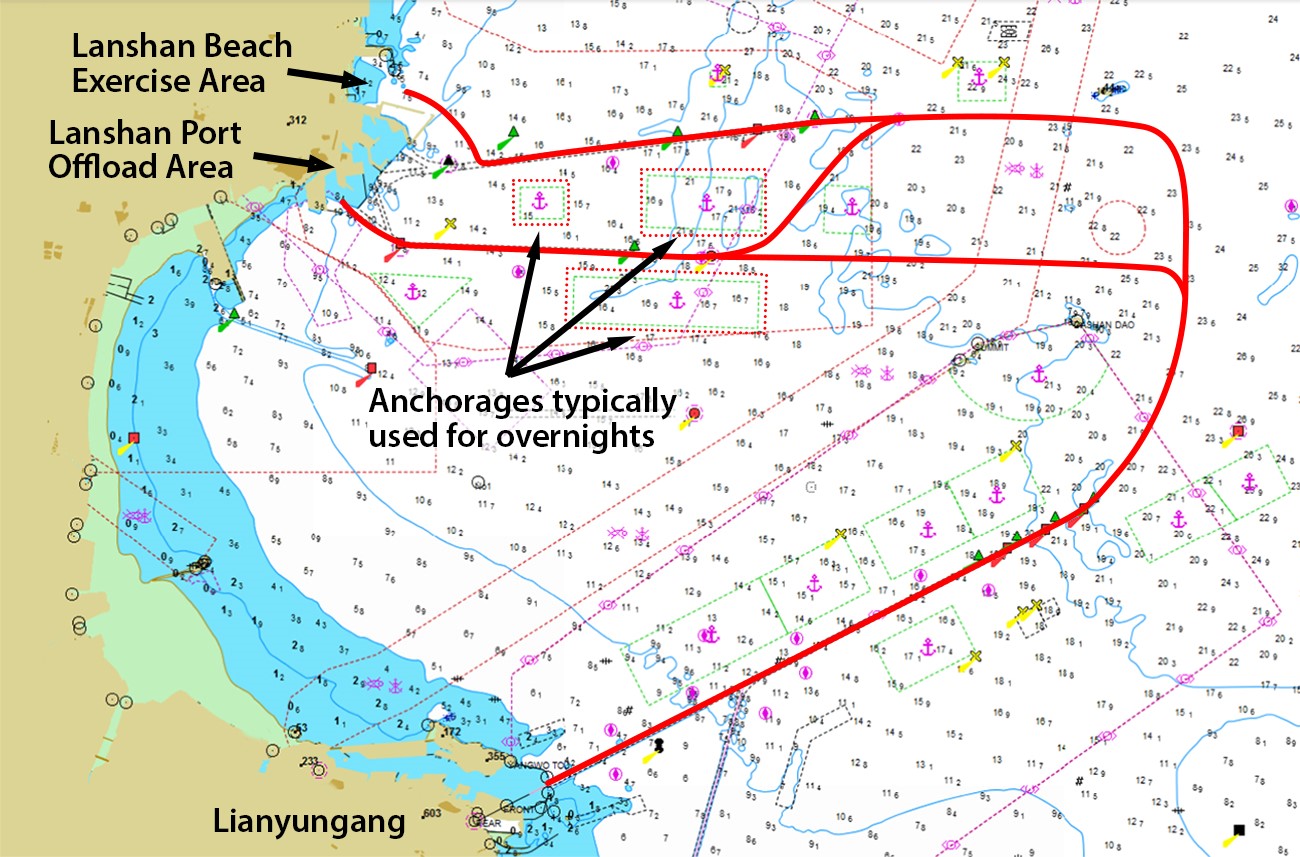
The Chinese offshore mobile debarkation system is large enough to be seen in lower resolution Planet Labs commercial satellite imagery acquired between June and August 2020. The Lanshan beach area imaged is just north of the fishing wharf where the pier modules were imaged in September 2020. The floating pier was set up and taken down several times over two months, each time with the semi-submersible barge attached or close by off-shore. The temporary piers in the Planet Labs images correspond to the lengths of the system seen in the much higher-resolution Google Earth/Maxar image – approximately 1200 feet for the green pontoon sections and 720 feet for the grey pontoon sections. The shorter floating pier was used throughout the course of the exercise for landing craft that were off-loading cargo ships and other ferries farther off-shore. Planet Labs imagery indicates the modular system remained in Lanshan until November 2020. Its current location is unknown.
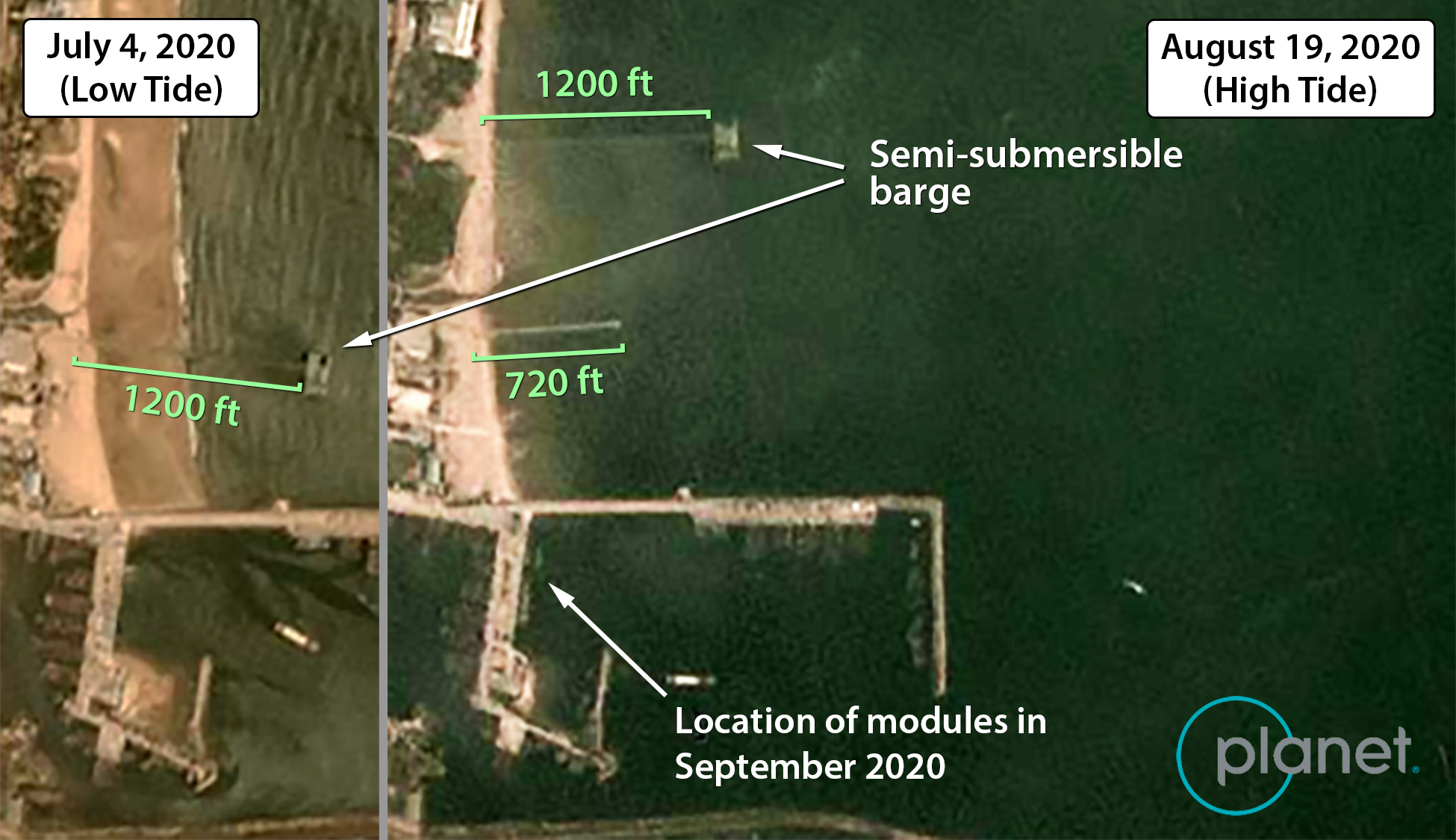
In late-August and early-September 2021, a new modular pier system was spotted in commercial satellite imagery at a known PLA amphibious training area in Dacheng Bay, China near the southern end of the Taiwan Strait. This improved system bears a closer resemblance to the U.S. Navy INLS. It is much more substantial and longer than the older floating pier, extending approximately 1475 feet from the shore. According to AIS tracks, two Bohai Ferry Group ships, the Boahai Mazhu and the Bohai Cuizhu visited the Dacheng Bay amphibious training area on September 4, 2021, probably to off-load dozens of ten-man assault boats in support of an amphibious raid. One significant indicator of floating pier operations in the exercise area was the presence of the same semi-submersible barge that was used in the summer 2020 exercise, the Sanhanggong 8, operated by the state-owned China Communications Construction Company (CCCC). The new floating pier system, the semi-submersible barge and an unidentified temporary pier may be seen in the low-resolution satellite image, below. Analysis of this exercise and its use of civilian shipping is on-going.

Beyond the media reports of the 2014 exercise and the 2020/2021 exercises, there is little open-source reporting available on the PLA’s use of these sectional causeways. It is interesting to note that in each example, the system was deployed in relatively sheltered areas with calm waters. The original Chinese patent for the system indicates it can operate in sea state 3 (wave heights up to 4 feet), which is identical to the advertised operating limit of the U.S. Navy INLS.
The Chinese offshore mobile debarkation system, while not as striking as the Chinese Navy’s newest amphibious assault ships, may have greater implications for how the PLA projects power over-the-shore, especially in a cross-strait amphibious invasion of Taiwan. Any large-scale landing by PLA Navy amphibious assault ships will require significant maritime lift for second echelon forces and logistics. This modular pier system may allow China’s substantial fleet of large civilian RO-RO ships to offload combat troops and equipment directly onto Taiwan’s beaches. Proficiency with this system and other JLOTS capabilities will be a critical capability in a cross-strait invasion if the PLA is unable seize Taiwan’s port infrastructure intact.
Michael Dahm is a senior researcher at the Johns Hopkins University Applied Physics Laboratory (APL) and retired U.S. Navy intelligence officer. His research focuses on foreign military technologies and operational concepts.
Conor Kennedy is a research associate at the U.S. Naval War College, China Maritime Studies Institute. His research focuses on Chinese military development and maritime strategy.
The analyses and opinions expressed in this paper are those of the authors and do not necessarily reflect those of the U.S. Navy, the U.S. Naval War College, the Johns Hopkins University Applied Physics Laboratory (APL) or APL sponsors. Commercial satellite images are sourced via SkyWatch Space Applications Inc. and Planet Labs, Inc. and are published under license from Planet Labs, which retains copyrights to the original, underlying images. This work has also been supported with AIS data from MarineTraffic – Global Ship Tracking Intelligence (www.marinetraffic.com).
Featured Image: An amphibious infantry fighting vehicle attached to a brigade of the PLA Navy Marine Corps launches anti-tank missiles during a maritime live-fire training exercise in mid July, 2021. (eng.chinamil.com.cn/Photo by Liu Yuxiang)

